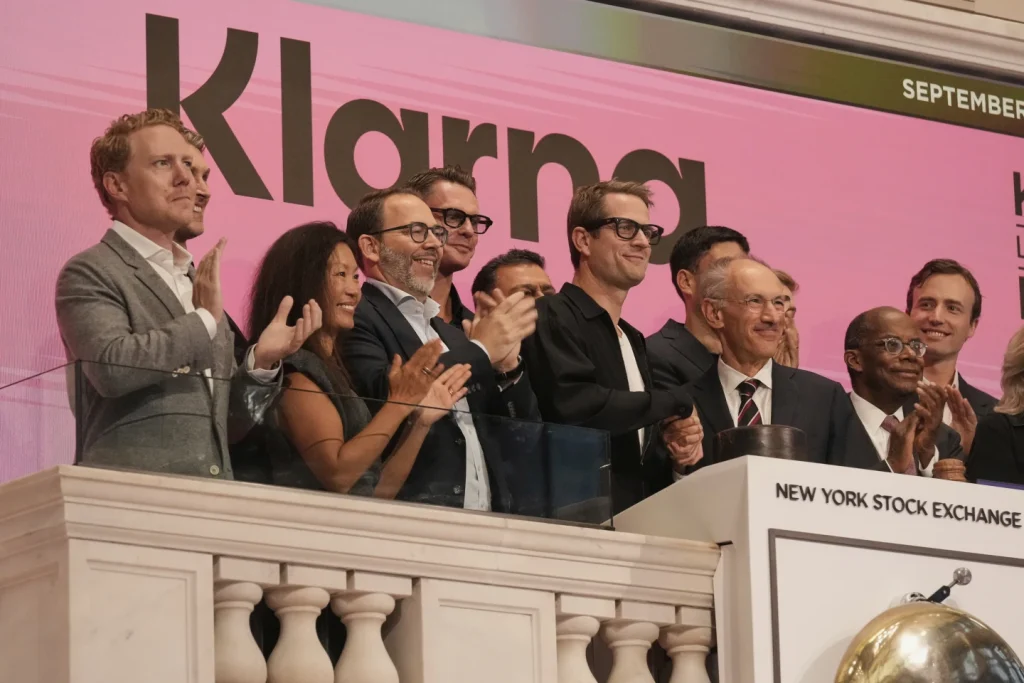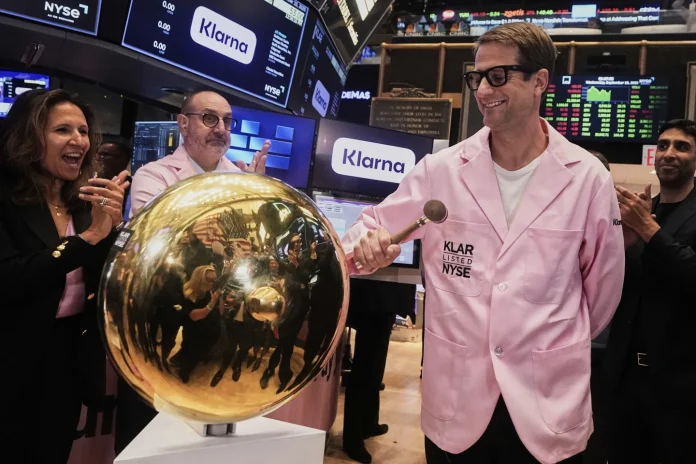Klarna’s Successful IPO Launch
Klarna stock opened at $52 a share Wednesday, a 30% premium to the company’s $40 pricing. Specialists on the NYSE floor took about three-and-a-half hours to manually price the first batch of trades. The shares rose as high as $57 before losing some momentum and closing at $45.82, up 14.6%.

Record-Breaking Share Sales
More than 34 million shares worth approximately $1.37 billion were sold to investors. This made Klarna’s IPO the largest this year, according to Renaissance Capital. Notably, 2025 has been busy for companies going public.
Other Notable IPOs This Year
This year also saw IPOs from the design software company Figma and Circle Internet Group, which issues the USDC stablecoin. Investors are also awaiting the market debuts of ticket exchange StubHub and cryptocurrency exchange Gemini, owned mostly by the Winklevoss twins.
Klarna’s Growth and Market Focus
Founded in 2005 as a payments company, Klarna entered the U.S. buy-now-pay-later market in 2015 through a partnership with Macy’s. Since then, Klarna expanded to hundreds of thousands of merchants. It also embedded itself in internet browsers and digital wallets as an alternative to credit cards. Recently, Klarna announced a partnership with Walmart.
Choosing the U.S. Market for IPO
The company will trade under the symbol “KLAR.” Although Klarna was founded in Sweden and is popular in Europe, executives chose to go public in the U.S. They see the American shopper as key to future growth. CEO Sebastian Siemiatkowski said, “It’s the largest consumer market in the world, and the biggest credit card market.” He called it a “tremendous opportunity.”
Klarna’s Mission Against Credit Cards
Siemiatkowski has repeatedly expressed that Klarna wants to attract customers away from big credit card companies. He views credit cards as high-interest products that consumers often misuse.
Klarna’s Popular Products
Klarna’s “pay-in-4” plan allows customers to split purchases into four payments over six weeks. The company also offers longer-term payment plans with interest. This model appeals to consumers reluctant to use credit cards. So far, 111 million consumers worldwide have used Klarna.
Regulatory Concerns and Company Response
Buy-now-pay-later firms like Klarna have attracted scrutiny from regulators and consumer groups. There are worries consumers might overextend financially, similar to credit card debt. Siemiatkowski says Klarna monitors usage closely. The average Klarna user’s balance is less than $100. Since loans last six weeks or less, Klarna can quickly adjust underwriting based on economic conditions.
Billionaire Founders and Early Investors
With the IPO, Klarna’s co-founders became billionaires. Siemiatkowski owns 7% of the company, worth about $1 billion at the IPO price. Victor Jacobsson, who left in 2012, holds 8.4%, worth $1.3 billion. Siemiatkowski did not sell shares during the IPO. Early investors like Sequoia Capital own 21%, valued at roughly $3.15 billion. Silver Lake owns about 4.5%.
Financial Performance and Loan Delinquency Rates
Klarna reported $823 million in revenue for Q2 before going public. Its adjusted profit was $29 million. The delinquency rate on “pay-in-4” loans is 0.89%, and 2.23% for longer-term loans. These rates are below average 30-day credit card delinquency rates.
Market Position and Competitors
Klarna is now the second-largest buy-now-pay-later company by market cap, behind Affirm. Affirm’s shares have surged over 40% this year, valuing the company around $28 billion. Investors believe buy-now-pay-later firms may take market share from banks and credit cards. Affirm’s shares fell slightly on Wednesday.
IPO Underwriters
JPMorgan Chase and Goldman Sachs served as Klarna’s primary underwriters for the IPO.















